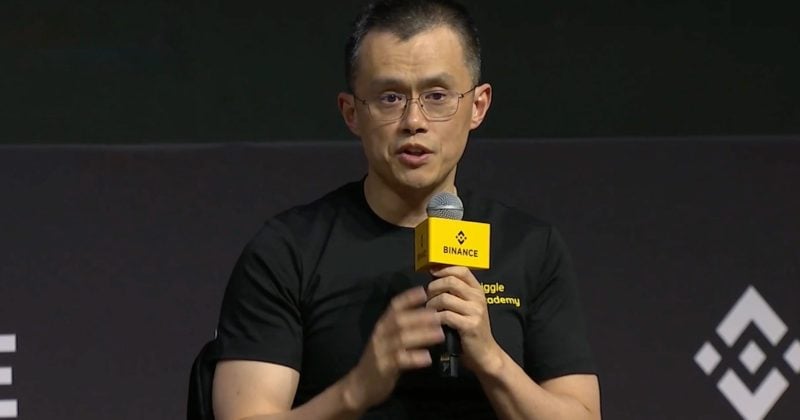Blockchain technology has long been heralded as a transformative force with the potential to reshape industries, streamline processes, and redefine trust in digital ecosystems. Yet, despite its promise, blockchain remains a niche player, even in the enterprise landscape. It’s still searching for its “ChatGPT moment”—that pivotal inflection point where it transitions from an experimental tool to an indispensable asset for businesses of all sizes.
But what will it take to get there? And how can we bridge the gap between blockchain’s current state and its aspirational future?
The current state of blockchain: A reality check

If you were to plot blockchain’s journey on the Gartner Hype Cycle (attached), you’d find it firmly lodged in the “Trough of Disillusionment.” This is not an unfamiliar stage for emerging technologies; after the initial wave of excitement fades, reality sets in, revealing both the strengths and limitations of the innovation.
In blockchain’s case, this phase is marked by fragmentation. Platforms like Hyperledger, Ethereum, and BSV each bring unique capabilities to the table, but they also highlight the lack of cohesion across the ecosystem.
Several challenges continue to hinder widespread adoption. Scalability remains a significant hurdle—many blockchain platforms simply cannot handle the transaction volumes required for enterprise-level applications. Interoperability is another roadblock, as the absence of standardized protocols makes it difficult for different blockchains to communicate seamlessly. Regulatory uncertainty adds another layer of complexity, leaving businesses unsure about compliance risks.
And then there are security concerns—while blockchain is often touted as inherently secure, vulnerabilities such as smart contract exploits, and 51% attacks persist. These issues collectively create friction that slows down mainstream adoption.
Charting the path forward
To move blockchain out of its current predicament and into the realm of indispensability, we need a strategic shift—one that focuses less on the technology itself and more on the tangible value it can deliver. Here’s how we can achieve that.
Focus on measurable outcomes
For blockchain to gain traction among mid-to-large enterprises, it must speak the language of business leaders: outcomes. Instead of fixating solely on the technical intricacies of distributed ledgers, proponents should emphasize the practical benefits—cost reduction, operational efficiency, enhanced security, and improved customer experiences. For instance, supply chain management could see dramatic improvements through end-to-end transparency enabled by blockchain. Similarly, healthcare organizations could leverage blockchain to ensure the integrity and privacy of patient records.
Concrete data and compelling case studies are essential here. Businesses want to see clear return-on-investment (ROI) narratives before committing resources. Highlighting real-world examples where blockchain has delivered measurable results will go a long way in building confidence. Whether reducing fraud in financial services or optimizing inventory tracking in retail, focusing on high-impact use cases will help demonstrate blockchain’s relevance.
Enhance accessibility and usability
One reason why many professionals hesitate to embrace blockchain is its perceived complexity. To overcome this barrier, user-friendly interfaces and seamless integration with existing systems are critical. Imagine a world where deploying a blockchain solution feels as intuitive as setting up a cloud service or integrating a new CRM platform. That’s the level of accessibility we need to strive for.
Collaboration with enterprise IT departments is equally important. Blockchain solutions must be designed to coexist harmoniously with legacy systems and modern cloud infrastructures. Additionally, developers—the architects of tomorrow’s innovations—need robust tools, comprehensive documentation, and supportive communities to experiment and build without unnecessary friction. When creating blockchain applications becomes as accessible as developing traditional software, adoption will naturally accelerate.
Drive interoperability and scalability
Interoperability and scalability are two sides of the same coin when unlocking blockchain’s full potential. Industry-wide standards are urgently needed to enable seamless data exchange between disparate blockchain platforms. Without these standards, enterprises risk being locked into siloed ecosystems, limiting their ability to innovate and scale.
At the same time, scaling solutions must evolve to meet the demands of large-scale operations. Layer-2 protocols, sharding, and other advanced techniques promise to improve transaction speeds and reduce latency. However, progress in this area requires collaboration—not just within the blockchain community but also with enterprise IT vendors and industry groups. By fostering collaborative ecosystems, we can create a foundation for sustainable growth.
Leverage the power of AI
Artificial intelligence (AI) and machine learning (ML) represent another avenue for propelling blockchain forward. Integrating AI/ML capabilities into blockchain applications opens up exciting possibilities. For example, AI-powered fraud detection systems could analyze real-time transaction patterns, flagging suspicious activities before they escalate. Predictive analytics could enhance decision-making by providing insights derived from blockchain data.
Decentralized AI—an emerging concept where AI models are trained and deployed across distributed networks—offers even greater potential. By combining the transparency of blockchain with the computational power of AI, we can create smarter, more resilient systems. Smart contracts, too, stand to benefit from AI integration, enabling them to execute complex business logic autonomously based on real-time data inputs.
Mitigate risks and address regulatory challenges
Finally, addressing security vulnerabilities and regulatory uncertainties is paramount. Conducting thorough risk assessments and implementing best practices for securing blockchain networks will instill confidence among stakeholders. Engaging proactively with regulators to shape clear and consistent frameworks is equally crucial. Compliance with data privacy laws like GDPR or CCPA must be baked into blockchain solutions from the outset.
Taking a proactive approach to risk mitigation and regulatory alignment can alleviate fears and pave the way for broader acceptance. After all, no enterprise will adopt a technology if it jeopardizes their reputation or exposes them to legal liabilities.
Conclusion: Unlocking blockchain’s potential
Achieving widespread blockchain adoption won’t happen overnight. It will require concerted efforts from every corner of the industry—blockchain providers, enterprises, governments, and regulators alike. By focusing on measurable outcomes, enhancing usability, driving interoperability and scalability, leveraging AI, and addressing risks, we can overcome the obstacles holding blockchain back.
The journey ahead may be challenging, but the destination—a world transformed by sufficiently decentralized, transparent, and efficient systems—is well worth the effort. Blockchain’s “ChatGPT moment” awaits, and those who dare to lead the charge will reap the rewards of shaping the next era of technological innovation.
In order for artificial intelligence (AI) to work right within the law and thrive in the face of growing challenges, it needs to integrate an enterprise blockchain system that ensures data input quality and ownership—allowing it to keep data safe while also guaranteeing the immutability of data. Check out CoinGeek’s coverage on this emerging tech to learn more why Enterprise blockchain will be the backbone of AI.
Watch: How AI transforms social networks with Dmitriy Fabrikant

















 English (US) ·
English (US) ·